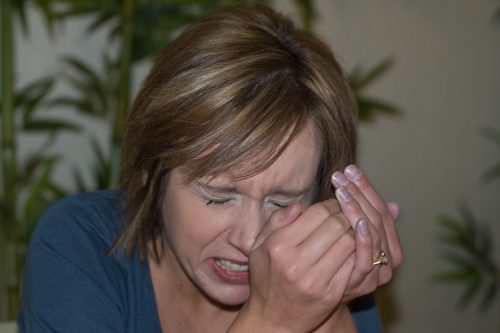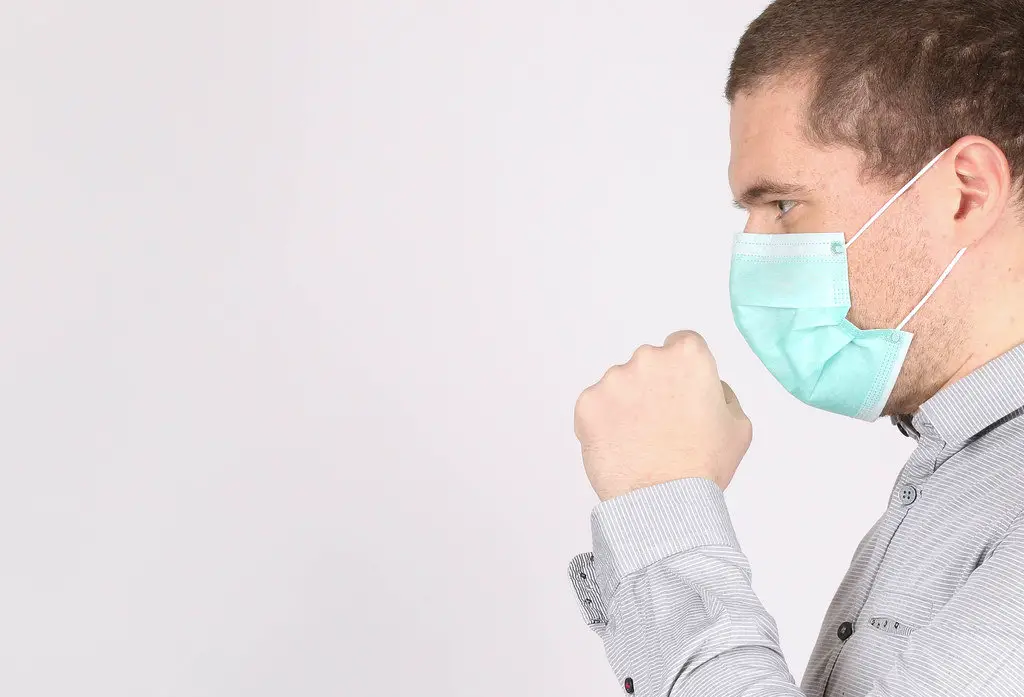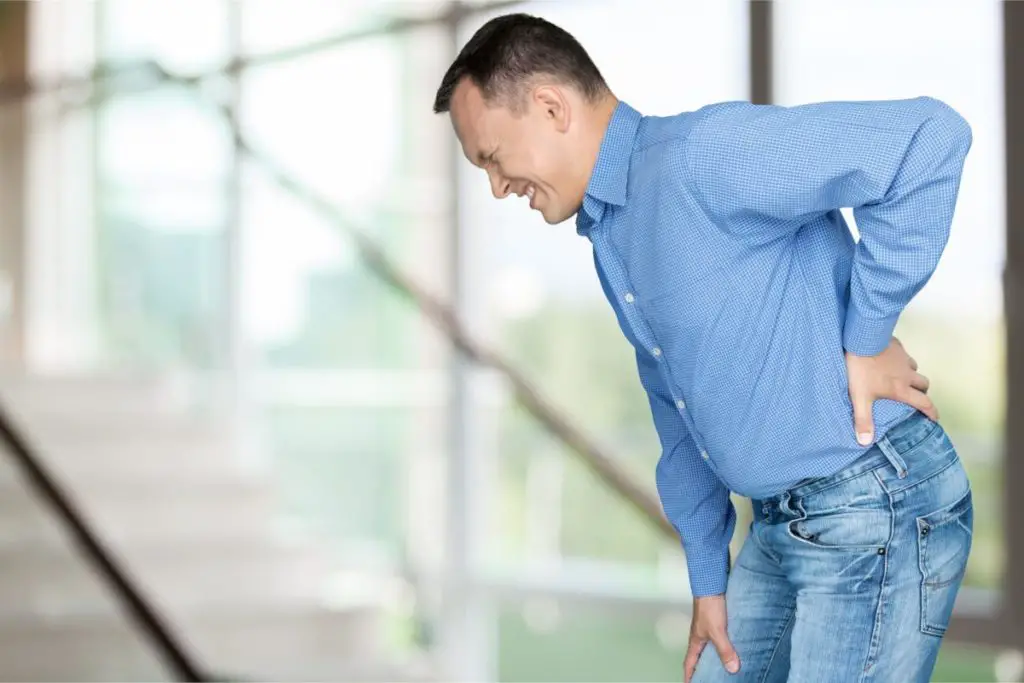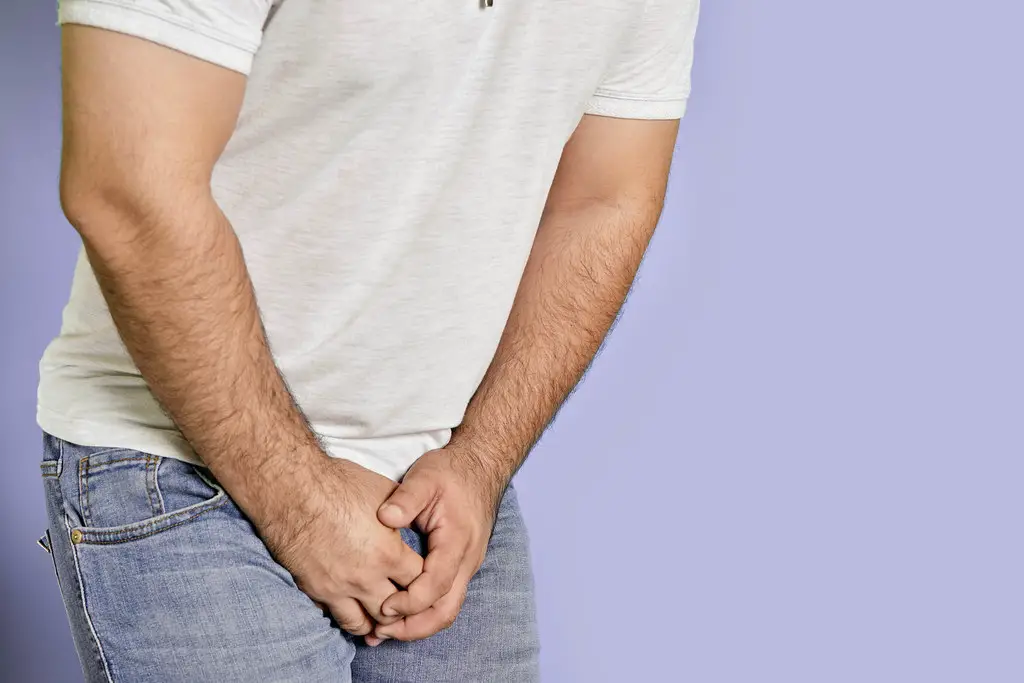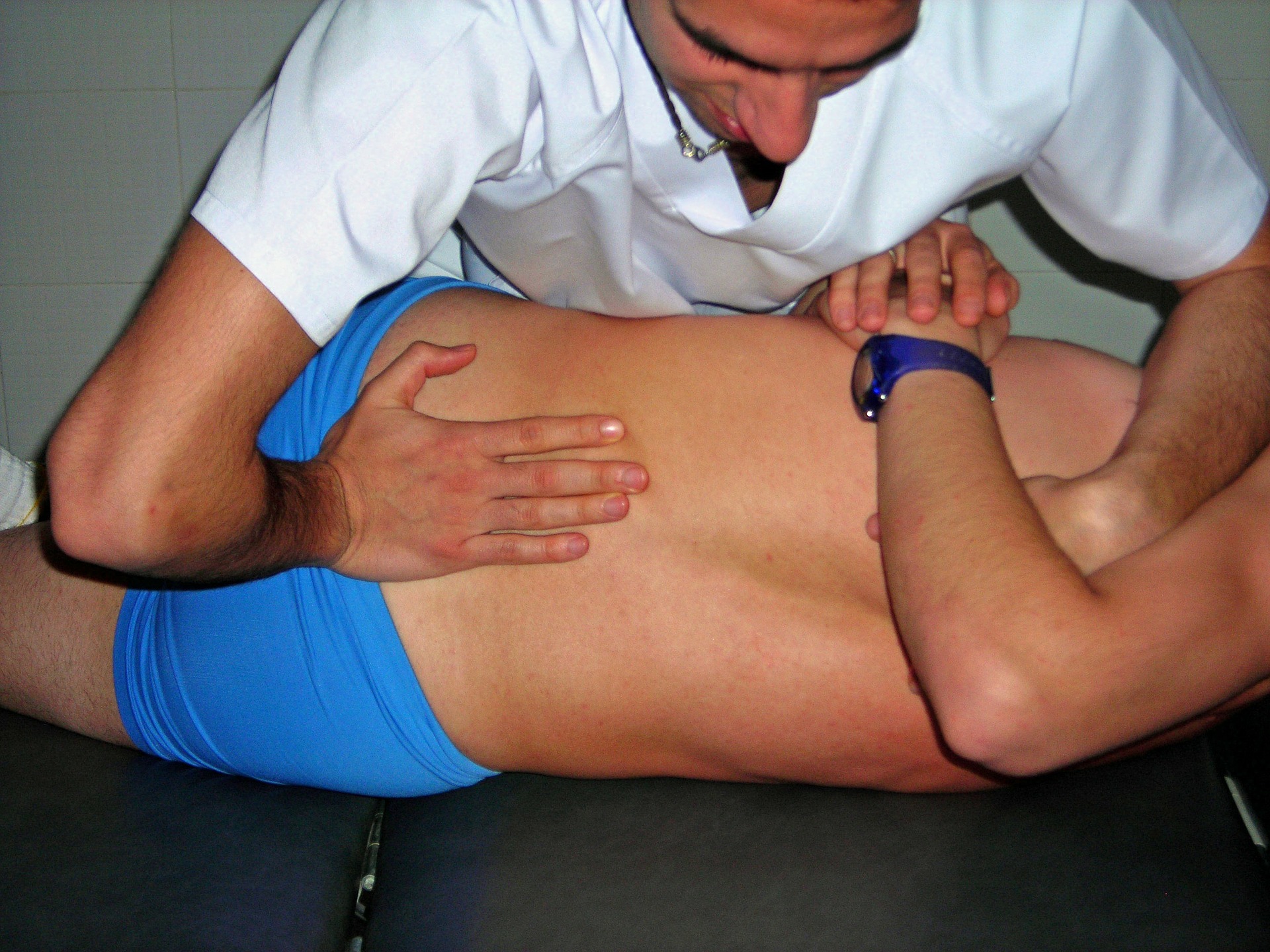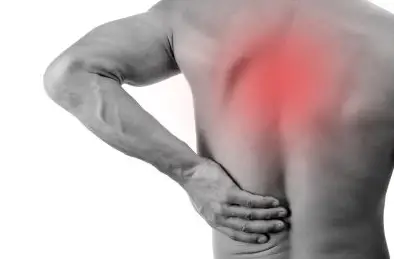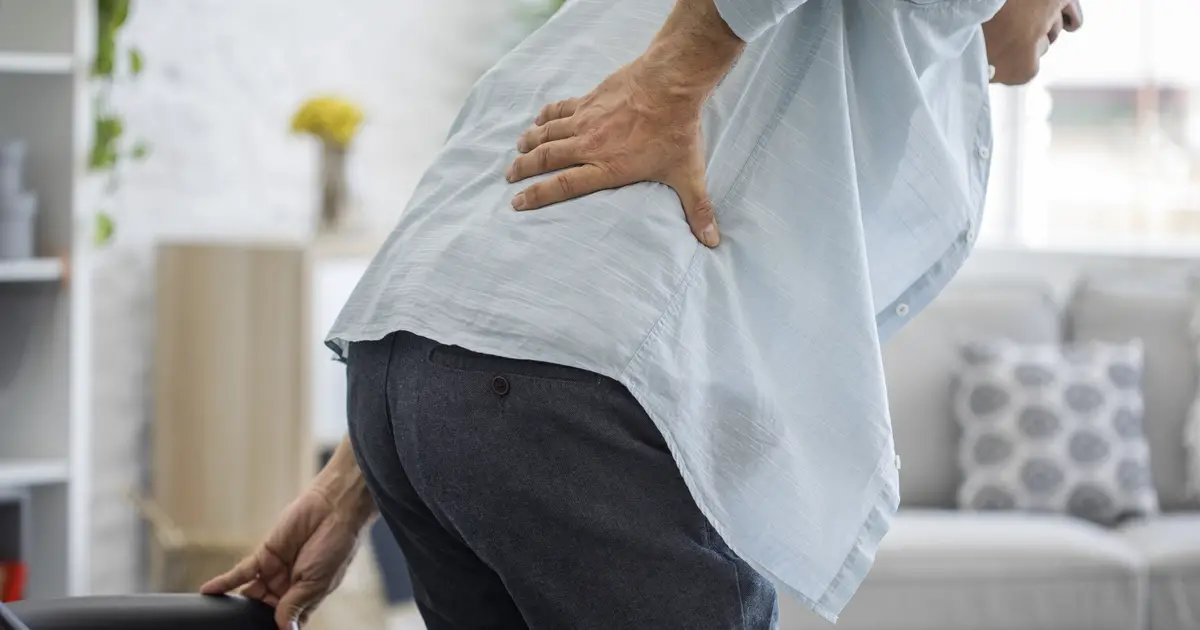The sneeze is a reflex that we all know and which appears in the event of a cold or other cause.
The fact to sneeze is the result of irritation of the nasal mucous membranes, which can be caused by different factors: dust to pollen, animal hair to smoke. It happens that sneezing is followed by back pain, which ranges from moderate to intense.
In this article we will try to understand why this happens and what you can do to remedy.
Spine anatomy: Definition
La spine is a bone column (vertebrae) which extends from the base of the skull at pelvis. The vertebrae are connected by joints called facets, and are held together by ligaments.
La spinal cord passes through a central channel in the vertebrae, and nerve roots branch out from the spinal cord to innervate the muscles and organs. The spine is divided into four regions:
- Region cervical : The cervical spine consists of seven vertebrae,
- Region thoracic : the thoracic spine is made up of twelve vertebrae,
- Region lumbar : the lumbar spine consists of five vertebrae,
- Region sacred : the sacral spine consists of five vertebrae.
The spine bones are protected by a layer of cartilage called intervertebral disc. The intervertebral disc acts as a shock absorber and allows flexibility of the spine.
When we sneeze, all these elements are put under tension and this can cause pain in different parts of the body, including the back. In most cases, this pain is mild and goes away on its own after a few minutes.
However, pain can sometimes be more intense and last several hours or even days. If this happens, it is important to know the exact cause.
What is a sneeze? Explanation
When you sneeze, your body is trying to expel something that is out of place. Sneezing is a reflex action, which means it is a auto reply to an irritant.
This irritant may be dust or foreign particle. When the irritant enters your nose, it triggers a series of actions. First, the nose hairs, called vibrissae, begin to wiggle back and forth to filter the air.
If the vibrissae fail to remove the irritant, they set off a chain reaction. The membranes inside your nose are irritated and swollen, and your nerves are sending a message to your brain to tell you to sneeze.
At the same time, your brain signals to muscles your chest and abdomen to contract. All this happens in a fraction of a second and results in a strong expulsion of air through the nose and mouth.
There are several possible causes of back pain when sneezing
You may never have considered the connection between sneezing and back pain, but there is a connection between the two. If you suffer from a herniated disc, you may have found that sneezing can make your back pain worse.
Indeed, sneezing increases pressure intra disc, which can put extra pressure on the discs in your spine. The pain may manifest in the lower back, middle back, between the shoulder blades, or radiate to the lower limb.
A herniated disc occurs when the outer layer of the disc ruptures, allowing the inner layer to expand. This can cause pain, numbness and weakness in the affected area.
To know everything about herniated disc, see the following article.
Why can a simple sneeze cause radiation like sciatica and cruralgia?
Everything is related to nerf sciatica. THE sciatic nerve is the longest nerve in your body, and it runs from your lower back to your feet. When you sneeze, the muscles in your abdomen contract and put pressure on the sciatic nerve.
This can cause a sharp pain in the leg, known as sciatica. In addition, sneezing can also cause cruralgia, which is a type of nerve pain affecting the thighs.
So the next time your back hurts after sneezing, you'll know there's a scientific reason for it!
It can also cause muscle spasms in the back and other parts of the body. The reason is that the sneeze is a powerful contraction of the diaphragm, the large muscle that separates the chest from the abdomen.
This contraction can cause a sudden arching of the spine, leading to muscle spasms.
Also, the sudden movement can put pressure on the spinal discs, leading to pain. However, these effects are usually temporary and go away on their own.
Sneezing and back pain: What to do?
The sneeze is an important reflex which helps protect your body from disease and infection.
When you sneeze, your body expels trapped particles, such as as dust, pollen or bacteria, your nose and your throat. While having a sudden fit of sneezing can be embarrassing, it's important to remember that sneezing is a natural and necessary process.
Treatment (of the cause of back pain)
For people suffering from chronic back pain, sneezing can be a major source of discomfort. The act of sneezing puts extra pressure on the spine, which can aggravate existing spinal problems
It is therefore important that people with back pain take steps to reduce their exposure to irritants and to treat the underlying cause of their back pain.
By doing so, they can minimize the risk of triggering a painful episode of sneezing.
How to relieve back pain? Our advices
If you are one of the 80% of adults who suffer from occasional back pain ou chronic, you might be wondering how relieve your back pain. Here are some of our top recommendations for relieving back pain:
- Get moving: Exercise is one of the best things you can do for your back. Not only does it help strengthen the muscles that support your spine, but it also increases flexibility and helps reduce inflammation.
- Try heat or cold therapy: Applying heat or cold to the affected area can help reduce pain and inflammation. Heat therapy can be done using a heating pillow, a hot water bottle or a hot compress, while cold therapy can be done using an ice pack, frozen vegetables or a cold compress.
- Adopt a good posture: Maintaining an appropriate posture (not to be confused with bad posture) helps reduce the strain on your spine and may prevent further back pain. While sitting, standing or sleeping
- Use support devices: There are several products and accessories available on the market to relieve lower back pain related to back pain. It should be remembered that these tools generally provide temporary relief, and should be used sparingly.
Among the products recommended by our professionals, we have:
- 【Multifunctional Physiotherapy】The acupressure kit set includes an acupressure mat and pillow, and 2 massage balls. You can use the acupressure set in different ways and on different parts of the body, such as lower back pain, insomnia, chronic stress, fatigue, tension, circulatory disorders, etc.
- 【Safe and Premium Material】The acupressure mat massager, cushion cover and storage bag are made of 100% cotton, the inside is 21D high-density eco-friendly sponge. The massage nail is made of non-toxic ABS plastic. 100% natural without side effects, hypoallergenic.
- 【Natural Ancient Indian Healing】 The acupressure mat has 230 massage nails, 6210 massage points, the pillow has 73 massage nails, 1971 massage points. Your weight is evenly distributed into thousands of small pieces to stimulate countless acupuncture points. Ideal for relaxation and promoting circulation. The size of the acupressure mat is 68*42cm, the size of the massage pillow is 37 x 15 x 10cm.
Last updated on 2024-04-25 / Affiliate links / Images from the Amazon Partners API
- 🔥BODY WARMING - The lumbar heating pad consists of a built-in heating pad that heats up quickly to provide warmth to treat symptoms, menstrual cramps and upset stomach, arthritis, leg aches and pains. Moreover.
- 🔥Vibration Massage - The back massager is integrated with 4 powerful massage motors to deliver a soothing vibrating massage. It helps reduce tension and strain in the neck and shoulders, lower back, lumbar region, thighs and legs.
- 🔥Customizable massage - This back pain wrap has 3 massage modes, 2 adjustable vibration intensities and 2 heating levels. Allows you to customize a setting for yourself to achieve the ultimate comfort. The heating pad is equipped with overheat protection and automatic shut-off functions to ensure safe use.
Last updated on 2024-04-25 / Affiliate links / Images from the Amazon Partners API
- POSTURE CORRECTION & MUSCLE ACTIVATION: Patented Neuroband technology activates back and shoulder muscles, reminding your body to align your back and shoulders while providing comfort and freedom of movement.
- PAIN AND TENSION REDUCTION: Supports and stabilizes tight muscles in the neck, back and shoulders helping to relieve pain and tension without restricting the muscles.
- INJURY PREVENTION: Helps prevent shoulder and back problems by providing support and preventing harmful movements. Recommended for everyday situations including sedentary or physical work, sports activities, housework, etc. The product promotes beneficial working positions by stabilizing weak muscles and aiding alignment, neutralizing the gap between joints.
Last updated on 2024-04-25 / Affiliate links / Images from the Amazon Partners API
- Improve unsupportive chairs: The comfort cushion in memory foam material uses body heat to adapt to the curves of the back and provide the lumbar support that is sorely lacking in office chairs
- Against back pain: Most chairs do not support the back, which causes tension. The ergonomic cushion supports the upper, middle and lower back, for complete comfort
- Breathable Cover: The chair cushion features a breathable mesh cover that allows air to circulate, preventing heat build-up. Finally enjoy a perfectly fresh seat all day long
Last updated on 2024-04-25 / Affiliate links / Images from the Amazon Partners API
- 30 LEVELS Massage Gun:ALDOM massage gun Choose the speed and massage heads that best suit your needs can quickly eliminate lactic acid produced after exercise, and for everyday relieve muscle pain, back and neck aches and stiffness, greatly reducing the time muscle recovery.
- Long Battery Life: Equipped with high quality battery, the muscle massager can keep working about 6-8 hours after charging, while the cooling system can effectively remove excess heat, if the battery is low, there will be a red prompt.
- Less than 45 dB Ultra Low Noise: ALDOM muscle massager gun which features high performance and low noise. features advanced technology and high-torque non-brushed electric motor, Featuring the high-precision mold which tightly connects the machine head and the body, The high-torque motor rotates 1800-4800 times per minute and achieves your tissue to loosen the fascia (connective tissue)
Last updated on 2024-04-25 / Affiliate links / Images from the Amazon Partners API
- LUMBA +: Uses the neurovertebral decompression technique recognized by INSERM, practiced in osteopathy practices and recognized by the Association of Exclusive Osteopaths. Spinal neurodecompression is a surgical or non-surgical procedure that aims to release pressure on the spinal cord or spinal nerves
- Neurovertebral decompression is a key element in the treatment of back pain such as herniated discs, bulging discs, sciatic pain, disc degeneration and osteoarthritis. Vertebral decompression is a principle increasingly used in the treatment of back pain (pinched sciatic nerve, disc pinching, scoliosis, compression of the vertebrae or low back pain).
- Let's discover the technique of spinal decompression and see together its effects by stretching against sciatica. Principle of vertebral decompression Vertebral (or neurovertebral) decompression is a gentle treatment used in the event of a stuck sciatic nerve, a herniated disc or even a pinched disc.
Last updated on 2024-04-25 / Affiliate links / Images from the Amazon Partners API
- BACK MASSAGE ROLLER TO RELIEVE YOUR MUSCLE PAIN: relieve your muscle pain and tension with the Core Balance pimpled foam roller. Roll the muscle massage roller placed under your muscles to break up soft tissue adhesions and target painful trigger points (muscle knots).
- DEEPER MYOFASCIAL RELEASE: Our back massage roller features a hollow plastic body with a nubbed foam exterior for deeper myofascial release. The nubs on this back roller act like the hands and fingers of a massager to target, relax and release tight muscle knots much more effectively.
- IMPROVE YOUR PERFORMANCE: Rolling the back roller over your muscles releases toxins, and increases the flow of blood and oxygen to the target area. Massage your muscles with our fitness roller before or after a workout to boost your performance, speed up your recovery time and protect you from injury.
Last updated on 2024-04-25 / Affiliate links / Images from the Amazon Partners API
- Compex and TENS (electrical stimulation)
- Muscle stimulator offering 30 programs: 10 physical preparation programs, 8 pain relief programs, 5 recovery programs, 2 rehabilitation programs and 5 fitness programs.
- The partner of your sports preparation, allowing you to prevent injuries, recover better but also relieve your pain.
- 4 independent channels allowing you to work 2 muscle groups simultaneously.
- PREMIUM GRADE, POWERFUL PULSE: Easy@Home TENS PL-029V, professional and effective device for pain relief with electronic muscle stimulation effect. The premium design with powerful, professional-grade pulse intensity is suitable not only for pain relief and muscle relaxation, but also muscle recovery and pain management for both amateur and professional athletes or athletes. regular practitioners.
- EFFECTIVE MASSAGE THERAPY: 20 power levels for intensity ranging from very light to extremely powerful, 5 automated massage program options and 3 traditional massage modes. An effective therapy device for pain relief. An ideal gift for Valentine's Day, Mother's Day, Father's Day, Christmas, Birthday.
- USER-FRIENDLY: Large backlit LCD display with fully automated, intuitive massage programs and adjustable intensity. Independent digital controls for left and right channels.
Last updated on 2024-04-25 / Affiliate links / Images from the Amazon Partners API
What about natural remedies?
Although they are not supported by solid scientific evidence, several natural products and home remedies are used to treat various body pains, especially for their anti-inflammatory power.
Here is a non-exhaustive list of plants and essential oils that are effective in controlling pain and inflammation:
- Turmeric : Thanks to its antioxidant and anti-inflammatory powers very powerful, turmeric is one of the most used plants in a culinary and therapeutic context. The composition of turmeric is essentially made of essential oils, vitamins (B1, B2, B6, C, E, K) and trace elements. But it is to its composition rich in curcumin and curcuminoids that we owe them and calm skin of this spice.
- REASON TO CHOOSE OUR TURMERIC CAPSULES WITH GINGER AND BLACK PEPPER – Our complex turmeric…
- POWERFUL TURMERIC CAPSULES - Turmeric is an excellent source of Vitamin C, antioxidants,…
- IDEAL AND PRACTICAL FORMULA – The powders we use are delicately harvested,…
Last updated on 2024-04-25 / Affiliate links / Images from the Amazon Partners API
- Ginger : In addition to the special flavor it brings to the kitchen and its aphrodisiac properties, ginger is a root well known for its anti-inflammatory powers. THE gingerol gives it its anti-inflammatory action. It is an active component acting on the inflammatory pain related to chronic joint inflammatory diseases, including rheumatoid arthritis, lupus, rheumatic diseases, etc. It has been proven that this active element is also effective in acting on the inflammation linked to arthritis and sciatica. Ginger also has other benefits thanks to its high potassium content and its richness in trace elements (calcium, magnesium, phosphorus, sodium) and vitamins (provitamin and vitamin B9).
- 【Natural Ginger Foot Patches】: Natural Foot Detox Patch with Ginger and…
- 【Ginger Anti Swelling Detox Patch】: Ginger Detox Patches are natural,…
- 【Removes Body Toxins】: Ginger Foot Patches helps reduce the buildup of…
Last updated on 2024-04-25 / Affiliate links / Images from the Amazon Partners API
- Omega-3s : Omega-3 are polyunsaturated fatty acids that play a very important role in the functioning of our body. They are provided by food in three natural forms: docosahexaenoic acid (DHA), alpha linolenic acid (ALA) and eicosapentaenoic acid (EPA). Beyond their action on the brain and the cardiovascular system, omega-3s prove very effective against inflammation. Indeed, they have the ability to act on the inflammatory mechanisms in osteoarthritis by slowing down cartilage destruction, thus they reduce the intensity of osteoarthritis pain. Since sciatica is most often linked to inflammation secondary to a herniated disc, it can also respond to omega-3s if you consume them regularly.
No product found.
- Lemon eucalyptus: Eucalyptus is a plant most often used in the form of herbal tea or essential oil. She would have anti-inflammatory effects which give it the ability to act on the bone and joint pain in general and the pain of sciatica in particular.
- Eucalyptus Citriodora Essential Oil.
- 100% pure.
- Botanical name: eucalyptus citriodo.
Last updated on 2024-04-25 / Affiliate links / Images from the Amazon Partners API
- wintergreen : Wintergreen is a shrub from which a very interesting essential oil is extracted. It is one of the most used essential oils in aromatherapy. This oil extracted from the shrub bearing the same name, is used in massage to relieve sciatica and act like a analgesic. Indeed, it provides a heating effect thanks to its ability toactivate blood circulation locally.
- PROPERTIES ORGANIC WINTERGOOD ESSENTIAL OIL: Wintergreen essential oil is…
- DIRECTIONS FOR USE: Refer to the instructions or ask your pharmacist for advice, This…
- PURESSENTIEL DNA: A range of 55 essential oils essential for well-being in the…
Last updated on 2024-04-25 / Affiliate links / Images from the Amazon Partners API

